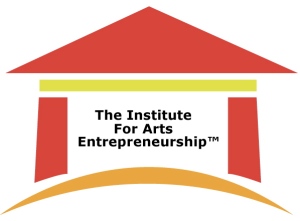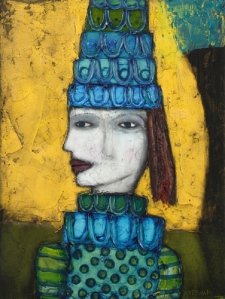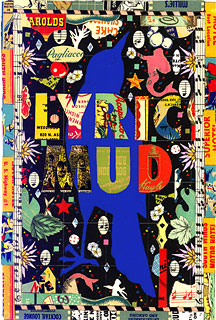I was privileged yesterday to take part in a Global Conversation of the Creative Studies Training Council. On the call were consultants, practitioners, organization leaders and artists working in the business sector from Australia, the Pacific, the United States and Canada. We were gathered to discuss our “praxis”, the ways we put our theories into practice.
On this occasion, I was actually being interviewed by our host, Linda Naiman, an artist and “corporate alchemist” from Vancouver, and I was asked to talk about some of the influences which have informed and, indeed, inspired my work. Fortunately, I had some time to think about this before going on the air and to chat with Linda a bit beforehand. We had just over an hour of air time planned and we wanted to reserve time for a couple of rounds of questions and comments from others on the call.
I decided to set the stage with some perspective on three of the big processes most all of us endeavor to activate in our work with clients: creativity, connectivity and transformation — each writ both large and small. For example, we may aim for transformation of the whole person or whole organization (transformation writ large), but nonetheless focus a great deal of our efforts on the smaller transitions, inflection points and thresholds to new thinking our clients may encounter as they grapple with the earthbound issues of the day-to-day (transformation writ small). Holding both levels somewhere in our own consciousness tends to clarify where we’re going and why. Happily, my listeners agreed.
With everybody now more or less on the same page, I talked about four of my greatest personal influences: Gregory Bateson, Buckminster Fuller, Miguel de Cervantes and Maxine Greene (names you may know well yourself). Each had a profound effect upon my thinking and growing edge over a period many years and still to this day. For the remainder of this blog entry, I’d like to share with you a few of the gifts that came my way via one of these figures, Gregory Bateson. (With a little luck, I’ll return to the others in days to come.)
Gregory Bateson was an anthropologist, psychiatrist and scholar who, among his many accomplishments, helped to launch the fields of systems thinking and living systems dynamics. He often spoke about “patterns which connect” us to the starfish, the starfish to the crab, the crab to the primrose — what biologists now call homology. This connectedness of life forms — both historically and in present time, both at the level of their shapes as well as their very molecules, their behaviors as well as their capacities for learning, thinking and adapting — this pervasive connectedness and the patterns which revealed and embodied this connectedness were underscored in countless articles by Gregory and certainly worked their way into my own formative mind.
A second gift from Gregory came in the form of his thinking about the aesthetic. He said that the aesthetic response was predicated upon our recognition of a connection between ourselves and the object of our gaze, that the aesthetic response was coincident with an experience of self-recognition in the very thing that we beheld. Wow! Finally, this experience of aesthetic recognition was transformative and powerfully so. This concept nearly blew all my circuits as I absorbed the implications of endeavoring to craft optimally effective encounters with the aesthetic.
Gregory’s third gift was practical and immediately reinforcing of my own instinct for interdisciplinary encounters. He called it “double description”. Describe a thing from two different perspectives, say from a scientific perspective and an arts perspective, and you get what he called a “bonus of insight” not predictable from either of the perspectives (the science or the art) alone. The double description works like binocular vision. Each monocular view reveals a perspective unique to its source, but experienced together we get more than two monocular views, we get “depth”, a whole new dimension springing into existence with the experience of binocular vision. The analogy with double description is simply stunning. The resulting bonus of insight in double description grants us a depth of understanding we could not achieve in any other way. This approach to learning and inquiry really fired my imagination and gave birth to concepts such as creative juxtaposition (a strategy for prompting bonuses of insight within our Concerts of Ideas) and thought path legacies (recognizing the significance of sequence in our encounters with ideas). The implications are simply far-reaching and probably embedded in your work as well, whether or not you’ve ever heard of Gregory or his concept of “double description”.
The fourth insight from Gregory was equally superb for me. (I was just then getting used to living in two worlds, a science guy now immersed in the arts and trying to reconcile the different perspectives.) Gregory introduced me to the concept of logical types and the different logics embedded in the systems of concepts (tautologies) comprising the various disciplines of knowledge. To operate within one tautology (discipline or logical type) one merely had to master the rules of that particular game. But Gregory was interested in something bigger than mastery within a domain. His eye was on how to play well in and across several domains, how, in fact, to jump from one domain or logical level to another as nimbly and fluently as possible. He wanted that bonus of insight from being a good jumper from level to level. (Remember the Einstein quote, “We can not solve the problems we face using the same level of think we used when we created them.”) We see the merits of shifting levels in many of today’s creative problem-solving strategies: shift of perspective we call it — the view from 80,000 feet vs. the view from 10,000 feet, the view from the life sciences vs. the view from mathematics, the view from population dynamics vs. the view from across the street, the view from a business perspective and the view from an arts perspective. The multiple views are illuminating, but it’s the capacity to leap creatively from one level to the next which grants the prized bonus of insight Gregory was seeking. Incidentally, this is where the name of our company, “Creative Leaps International”, comes from.
The culminating gift from Gregory was in beginning to grasp the meaning behind the titles of his two great books: STEPS TO AN ECOLOGY OF MIND (1972) and MIND AND NATURE: A NECESSARY UNITY (1979). Was it possible, I thought, that our minds formed an ecology of inter-relationships among our capacities and the myriad ideas we brought into our heads? Did the dynamics of one play out in the dynamics of the other? And was this what William Blake was after when he said, “To the Eye of a Man of Imagination, Nature is Imagination itself. As a man is, so he Sees. As the Eye is formed, such are its Powers.” Was this concept of mind more inclusive than my mind and yours? What about non-biological minds and Nature itself as Mind? Talk about different levels of thinking! Gregory made me think about the cohesion/ecology of ideas and bodies of knowledge, what Vartan Gregorian of Carnegie Corporation has called “knowledge integration”, about our basic human impulse for synthesis so easily derailed by the onslaught of new information, and on and on. What could I do to catalyze “steps” in this direction, I wondered? Some thirty years later and looking back, I can see that so much of my work, and that of all of us here at Creative Leaps International, was born out of this question and Gregory’s inspiration. I owe Gregory quite a lot.
I hope as you’ve been reading these notes that you’ve seen aspects of yourself and your work in these ideas. They are part of the legacy within which I believe we are all working. We are pioneers, all. I look forward to your comments and personal insights. Till later!
John










